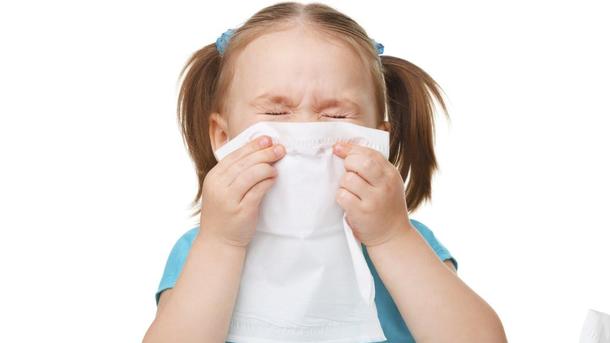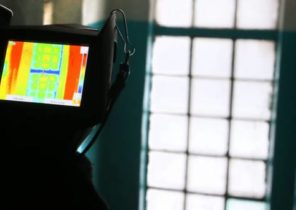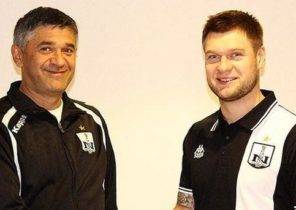
The baby fifth day of a runny nose, cough, and allocation become thick and yellow-green. Many parents panic: “What if it’s sinusitis? What if harmful mucus “go” in your ear or worse, “down” in the bronchi?”. A child is forced to actively blow your nose, just to be sure give antibiotics, Kuta in hundred odezhek and are not allowed on the street. Further in different ways: either the disease is retreating, and her mother sighs with relief, or complications arise, and the family look guilty. Meanwhile, to predict what will develop acute rhinitis, is almost impossible. And all because of a runny nose starts, SARS, pertussis, and parainfluenza, but the same symptoms the child’s body reacts, for example, cigarette smoke or household chemicals. Enhanced combat this disease without clarifying his reasons are not only not help, but harm from drops and sprays rhinitis in children can become chronic.
THREE MAIN CAUSES OF PROLONGED RUNNY NOSE
Swelling and nasal congestion, a pile of napkins in the pockets familiar to every adult. However, more and longer rhinitis affects children. In preschoolers and children of primary school age runny nose as a symptom or a distinct disease can occur 6-8 times a year. That is almost every month except for the summer period.
Children’s runny nose can be protracted and last for 14 days.
“There are several reasons, — explains the General practitioner, health blogger, promoter of evidence-based medicine Sergei Makarov. — First, age-related immaturity of immune system and little experience in the fight against viruses. There are over 200 varieties of viruses that can trigger a cold, and the child is 3-4 years old, who just started kindergarten, starting to consistently be with them “to meet”.
Secondly, due to the fact that the nasal passages of the child narrow, discharge depart difficult. So the baby cold, as a rule, are protracted and can last 10-14 days.
“All this time the child may cough. But this does not mean that the disease has affected the throat: cough provoked discharge, which flow down the back of the throat and irritate the entrance to the respiratory tract. An increase of the temperature, whether involved in the disease of other organs, depends on the type of virus and met with him in the body before. So, when rhinovirus colds all starts, and, most of all, it’s all over. And parainfluenza virus starts with runny nose, but after a couple of days with the maximum probability of trigger laryngitis,” explains Makarov.
The third reason is the different allergens. “Young patients with allergic rhinitis are increasing, — said the doctor-otolaryngologist Lina Pelevin. — The acute form of the common cold is difficult to distinguish from viral rhinitis by yourself. The child observed the same swelling of the nose, shortness of breath and profuse discharge, another may be concerned about watery eyes, and itchy eyes. If he meets with an allergen not too often, mom may not be aware of his allergies, confusing aggravation of allergic rhinitis with mild SARS. If such “lungs of SARS” are repeated often, you need to consult a doctor for tests and to establish their true cause.”
THE CORRECT TREATMENT
To predict the development of complications and to start their treatment in advance is impossible: there is no nasal interferons or antimicrobial sulfatsil sodium. Also, do not at the first sneeze use drops with antibiotics: their “local action” will burn the sensitive mucous membranes of the child.
“If rhinitis occurs without complications — quite regular nasal lavage with saline, stresses Pelevin. — If the discharge prevented to eat and sleep, you can use a vasoconstrictor drops. In this case it is important to follow the dosage and not to use them longer than 5-7 days.” By the way, they only reduce swelling, but do not reduce the amount of discharge. And from them it is important to get rid of. “It is believed that frequent washing of the nose can cause otitis media, — said Makarov. But this is only true when a child is forced to vigorously blow your nose: increased pressure in the nasal cavity transfers the pathogens in the middle ear cavity. Remove the selection carefully: ideally, using an aspirator”.
A nasal wash helps not only in viral but also in allergic rhinitis. But vasoconstrictor drops in this case, not assistants. “Allergic rhinitis may last for a long time. If the dripping nose will begin chronic medicament rhinitis, warns Pelevin. — It is important to establish what is the allergen. Sometimes protracted rhinitis gives rise to parasitic (e.g. worm) infestation: so nasal mucosa reacts to the overabundance of toxins. And is to appoint a de-worming treatment, as it passes”.







